“I am a digital art advisor and curator”
I advise clients about NFTs, digital art, and vintage computer art of the 1960s and curate art exhibitions. I am also a collector of digital art and NFTs. My interest in digital art started during the Internet art movement in the 1990s, and I discovered blockchain art and NFTs in 2017.
In 2018, I curated my first blockchain art exhibition, “Perfect & Priceless: Value Systems on the Blockchain,” at Kate Vass Galerie in Zurich. There, I showcased the works of Rhea Myers, Harm van den Dorpel, Kevin Abosch, and Larva Lab’s first presentation of the Cryptopunks in an art exhibition.
Another topic that interested me at that time was artificial intelligence (AI). I organized another show in the same gallery called “Automat und Mensch,” which was a historical survey of AI. Among the artists in the show were Herbert W. Franke, Vera Molnar, Frieder Nake, Casey Reas, John Maeda, Sofia Crespo, Helena Sarin, Robbie Barrat, and Mario Klingemann. This exhibition sparked discussions about whether AI would replace artistic talent and human inspiration. What most people don’t know is that very often, physical artworks aren’t really created by the hands of artists alone. Many sculptors, for example, only draft a sketch, while foundries or production companies actually produce the artwork. This is the same with digital art and NFTs nowadays, where an artist has an exciting concept and writes an algorithm, while the actual artwork is generated by a machine. AI and algorithms are the brushes of contemporary artists. A good artist still maintains his recognizable signature.
Text-to-image AI tools such as Dall-E and Stable Diffusion allow anyone to create artworks without any artistic background. It reminds me of the time when the medium of photography was invented, and suddenly anyone could take pictures with a camera. It was difficult to differentiate artists from common users, but over time, some artists mastered the medium more than others and developed their own recognizable style.
I don’t think that AI is going to replace the artist and his/her creativity but rather enhance the abilities to create art. AI is like a brush tool and can make things possible that might not have been considered before. The greatest artists are the ones who stand out through innovation and who create new algorithms, as for example, Larva Labs who developed the basis for the ERC721 standard on Ethereum, which would become the most common standard for non-fungible tokens (NFT).
I see great potential for the future of the NFT market and the blockchain as a medium for artists. We are at the very beginning, and the current bear market brings in consolidation and great opportunities for NFT collectors.


